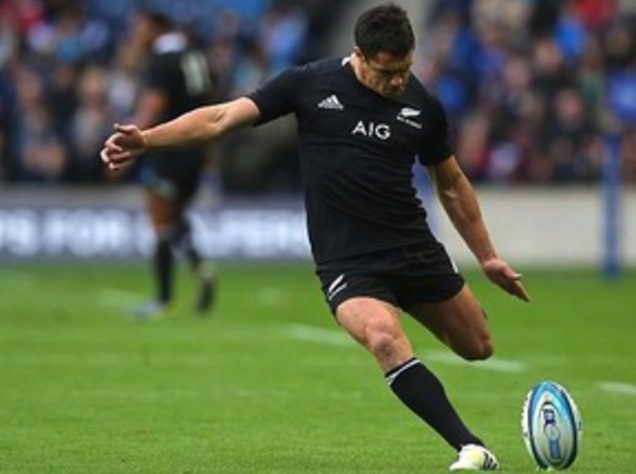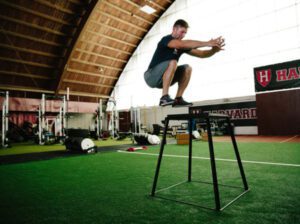Often underdeveloped, kicking ability and good knowledge of kicking situations is essential to a well-rounded rugby player. A kick during rugby play is permitted to travel in any direction, unlike passes which must be either backwards or lateral, and may be kicked at any time. The following is a list of the different types of kicks, and when each ought to be used:
Long Kick: The primary objective of the long kick is to gain ground on the opposing team. Almost always forfeiting possession of the ball, the long kick is used to put your team in a better position (closer to the in-goal area). This kick is best made into unoccupied space so that your teammates are able to limit the forward progress of the opposing team when they receive the kick.
High Kick: Used in similar situations to the long kick, the high kick makes it difficult for your opponent to receive and retain possession of the ball. Because high kicks can bounce erratically, they offer the possibility of being recovered by the kicking team. Additionally, given their extended time in the air, the kicking team has time to converge on the other team before the ball lands or is caught.
Chip: A chip is an offensive kick used to make forward progress without running through the defensive line. Chip kicks are short kicks just over the defensive line that are intended to be recovered by the kicking team. A good chip is invaluable for any rugby player.
Grubber: A grubber kick is like a chip, but instead of going over the defense it goes through the defense. A grubber is kicked very close to the ground and lends itself to recovery because of bouncy nature.
Penalty shots and conversions: Kicked from the ground or a kicking tee, this kick allows you to score points for your team after a penalty or when attempting to convert a try. There are two main techniques for this type of kick: the “toe kick” and the “instep kick.” The toe kick is kicked straight-on and involves striking the ball with the toe of your shoe. The instep kick, used often when kicking at an angle, involves a slightly more diagonal approach and contact occurs between the instep of the foot rather than the toe.
Drop Kicks: Used for field goals, game starts, and restarts, this special type of kick is dropped by the kicker and must bounce up off the ground before being struck with the foot. Drop kicks require precision and practice and are a little trickier than standard kicks. Drop the ball onto its tip, not its side, and make sure your leg movement is timed correctly for impact after the bounce.
CoachUp is the safest and easiest way to find a private sports coach. With our 100% money-back guarantee and vetted coaches, anyone can achieve their full athletic potential. Find your perfect private coach today and become the athlete you want to be!
How useful was this post?
Click on a star to rate it!
Average rating 4.3 / 5. Vote count: 19
No votes so far! Be the first to rate this post.



